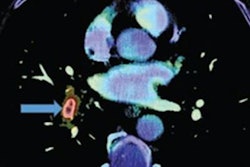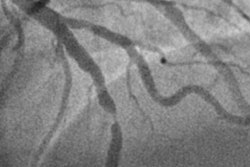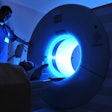
CT coronary angiography (CTCA) is an effective way to assess patients experiencing acute chest pain -- and to determine whether the person needs further, more invasive diagnostic imaging, according to a study published March 13 in Heart.
The findings could help patients avoid unnecessary imaging, wrote a team led by Dr. Charlotte Greer of the University of Otago Christchurch in Canterbury, New Zealand.
"In higher-risk populations, CTCA has potential to fulfill a gatekeeper role to invasive angiography," Greer's group noted.
The use of CT coronary angiography for evaluating chest pain in low-risk settings has increased in recent years, but its efficacy for acute settings like the emergency department is less certain, the team noted. Greer and colleagues conducted a literature review of six studies conducted around the world that explored the use of CTCA in higher-risk patients with acute chest pain; the studies included data from more than 4,000 patients.
The investigators gleaned the following from their review:
- In patients with either stable or acute chest pain, CT bests functional testing for the detection of heart disease, with sensitivity and negative predictive values of close to 100%. "This makes CT an excellent test to support early discharge in acutely presenting patients where pretest probability is low and a 'rule out' test is required," the group noted.
- CTCA may detect other conditions, such as pulmonary embolism or lung or aortic abnormalities.
- As well as "facilitating safe and rapid [ED] discharge, anatomical evaluation with CTCA can increase detection of non-obstructive coronary artery disease where functional tests may not," Greer and colleagues wrote.
- CTCA can help identify which patients need further testing such as invasive angiography.
- Using CTCA as a first test for assessing acute chest pain could translate to reduced hospital stay, time to diagnosis, and healthcare costs.
The literature review suggests that CTCA shows promise as an initial test for patients experiencing acute chest pain, the authors wrote, although they did urge further research regarding "the benefits of CT in the high-risk setting ... [to] determine how CT can be fully used to maximum benefit."
"[CTCA] may allow more appropriate selection of patients to proceed to invasive management with no disadvantage in outcomes and can provide a more comprehensive risk stratification to guide both acute and long-term management than routine invasive angiography," the group noted.



















